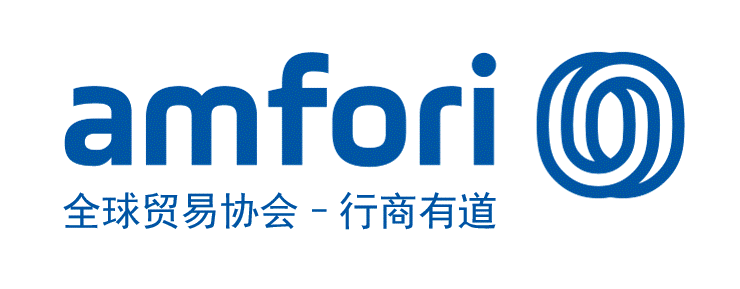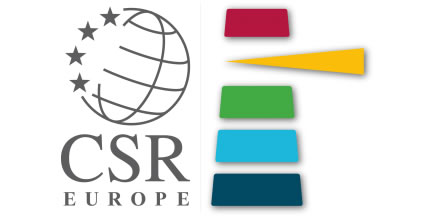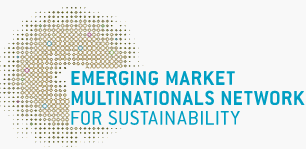WBCSD Releases Updated Global Water Tool for Sustainable Water Management
2015-04-02WBCSDadmin0010

Geneva, 9 February 2015 – Today, the World Business Council for Sustainable Development (WBCSD) is releasing an updated version of the Global Water Tool (GWT) with some of the most recent datasets, including water stress indicators from the World Resources Institute (WRI). This version introduces user-friendly options allowing easy import of existing data and improved GIS-based mapping.
Access to water is a basic human right and a critical sustainable development challenge. As competing demands for water continue to rise, the effects of climate change further exacerbate the challenges associated with water quality and availability, creating new risks for businesses, governments, communities and the environment. In certain parts of the world, demand already exceeds local supply. Uncertainties, tensions and dilemmas associated with water use affect any organization as it uses water in its own operations (within the product, in the process or for consumption/use by employees), depends on it indirectly (upstream supplier dependencies, downstream consumer dependencies) or relies on certain ecosystems that help regulate the flow and quality of water.
Water constraints can translate into significant risks (financial, operational, market-related, reputational or regulatory) for businesses operating globally. Sustainable water management and cost-effective risk mitigation often require action at a local level, often outside a company’s direct control. Watershed collaboration among leading companies is increasingly common based on the understanding that water is a finite shared resource resulting in collective risk and requiring collective action.
First launched in 2007, GWT is an excel-based tool for identifying corporate water risks and opportunities. Users can map their locations and water use against water, sanitation, population and biodiversity datasets and stress indicators on a country and watershed basis, with future outlook, and in turn assess water risks related to their global operations, supply chains and new projects. User-friendly, free and publicly available, the tool provides easy access to and analysis of critical data. A first level screening can be performed throughmaps, figures or charts capturing key water performance and risk indicators.These metrics can then be used for reporting under corporate disclosure initiatives like the Global Reporting Initiative, CDP Water, Bloomberg and Dow Jones Sustainability Index.
A first step towards improved water management, the global analysis supported by the tool can guide a deeper understanding of local communities' water situations, and help prioritize actions for sustainable water management. A robust strategy for minimizing risk and building long-term resilience will take into account community engagement, supply chain and watershed management, transparency and public policy.A comprehensive corporate water management strategy and holistic water stewardship approaches can follow the global analysis, enabling effective communication/ reporting and dialogue with both internal and external stakeholders (including for instance the development of internal policy and guidelines, the education of supply chain partners, with consistent metrics and terminology). Also, water risks should not be managed in isolation from other impacts and related trade-offs, including land use, energy consumption, and greenhouse gas emissions. Efficiency measures and circular approaches can reveal opportunities for co-benefits and co-optimized solutions capable of breaking through the silos of water, energy and waste.
The tool can be used in combination with other tools to support decision-making such as a company’s internal environmental data tracking tool. It is compatible with GEMI’s Local Water Tool used in building management plans at a specific site or operation.
GWT, developed with an advisory board of the WBCSD member companies and partner organizations, including IPIECA, encourages all stakeholders to take action, whether at global, national, watershed or site level to support sustainable water management by all.
“We’re proud to release this new version aimed at further alignment in water risk assessment. Collaboration among stakeholders is key to mitigating collective water risks, developing scalable and impactful solutions and driving their locally-relevant implementation.” says Joppe Cramwinckel, Director, Water, WBCSD.
Betsy Otto, Global Director, Water Program, WRI, adds “A consistent, comparable approach to measuring water risk is needed to advance our understanding of shared water challenges and drive improved water management. The updated GWT helps advance this understanding and helps to drive greater alignment with other existing metrics measuring and communicating water risks. “
“The upgrade of GWT provides an excellent opportunity to continue the partnership between IPIECA and the WBCSD, and to encourage even greater consistency in how companies assess water risk.” says Brian Sullivan, Executive Director, IPIECA,
“This tool is a great resource to help companies assess their water performance in the local context and to minimize reporting burdens for those who report to different frameworks and stakeholder groups.” Bastian Buck, Director Reporting Standard, GRI
Advisory Board
Since 1997, the WBCSD has worked to raise the profile of water on the corporate agenda and has increasingly been recognized as the leading business voice on water. A Leadership Group of member companies representing varioussectors, now co-chaired by Borealis and EDF, was established in 2010 to drive and support the program’s activities according to the following long term vision: “We aspire to achieve responsible water management throughout our value chains and operate in an environment where all people and businesses have access to safe and reliable water supply and adequate sanitation.”
The WBCSD’s Water Leadership Group stewarded the development of the Global Water Toolwith financial and intellectual contributions. The tool was developed by member and global engineering company CH2M HILL. “CH2M HILL is pleased to have worked with the WBCSD in developing water business tools since 2007 with the launch of the first GWT,” says CH2M HILL Global Technology Director Brock Mc Ewen. “These tools have helped hundreds of companies use their water resources more efficiently and sustainably. With the increasing and competing demands for water, the functionality of this latest version of the GWT will help these businesses even more effectively manage and preserve this precious natural resource.”
An advisory board of member companies in a range of industries provided deeper oversight and pilot testing for this 2015 update: BASF, DSM, DuPont, EDF, GDF Suez, Italcementi, Pepsico and Shell, with the contribution of IPIECA.
The WRI and GRI provided knowledge and technical input for tool development. CDP, Dow Jones Sustainability Initiative and GEMI were consulted to ensure compatibility.
Access to water is a basic human right and a critical sustainable development challenge. As competing demands for water continue to rise, the effects of climate change further exacerbate the challenges associated with water quality and availability, creating new risks for businesses, governments, communities and the environment. In certain parts of the world, demand already exceeds local supply. Uncertainties, tensions and dilemmas associated with water use affect any organization as it uses water in its own operations (within the product, in the process or for consumption/use by employees), depends on it indirectly (upstream supplier dependencies, downstream consumer dependencies) or relies on certain ecosystems that help regulate the flow and quality of water.
Water constraints can translate into significant risks (financial, operational, market-related, reputational or regulatory) for businesses operating globally. Sustainable water management and cost-effective risk mitigation often require action at a local level, often outside a company’s direct control. Watershed collaboration among leading companies is increasingly common based on the understanding that water is a finite shared resource resulting in collective risk and requiring collective action.
First launched in 2007, GWT is an excel-based tool for identifying corporate water risks and opportunities. Users can map their locations and water use against water, sanitation, population and biodiversity datasets and stress indicators on a country and watershed basis, with future outlook, and in turn assess water risks related to their global operations, supply chains and new projects. User-friendly, free and publicly available, the tool provides easy access to and analysis of critical data. A first level screening can be performed throughmaps, figures or charts capturing key water performance and risk indicators.These metrics can then be used for reporting under corporate disclosure initiatives like the Global Reporting Initiative, CDP Water, Bloomberg and Dow Jones Sustainability Index.
A first step towards improved water management, the global analysis supported by the tool can guide a deeper understanding of local communities' water situations, and help prioritize actions for sustainable water management. A robust strategy for minimizing risk and building long-term resilience will take into account community engagement, supply chain and watershed management, transparency and public policy.A comprehensive corporate water management strategy and holistic water stewardship approaches can follow the global analysis, enabling effective communication/ reporting and dialogue with both internal and external stakeholders (including for instance the development of internal policy and guidelines, the education of supply chain partners, with consistent metrics and terminology). Also, water risks should not be managed in isolation from other impacts and related trade-offs, including land use, energy consumption, and greenhouse gas emissions. Efficiency measures and circular approaches can reveal opportunities for co-benefits and co-optimized solutions capable of breaking through the silos of water, energy and waste.
The tool can be used in combination with other tools to support decision-making such as a company’s internal environmental data tracking tool. It is compatible with GEMI’s Local Water Tool used in building management plans at a specific site or operation.
GWT, developed with an advisory board of the WBCSD member companies and partner organizations, including IPIECA, encourages all stakeholders to take action, whether at global, national, watershed or site level to support sustainable water management by all.
“We’re proud to release this new version aimed at further alignment in water risk assessment. Collaboration among stakeholders is key to mitigating collective water risks, developing scalable and impactful solutions and driving their locally-relevant implementation.” says Joppe Cramwinckel, Director, Water, WBCSD.
Betsy Otto, Global Director, Water Program, WRI, adds “A consistent, comparable approach to measuring water risk is needed to advance our understanding of shared water challenges and drive improved water management. The updated GWT helps advance this understanding and helps to drive greater alignment with other existing metrics measuring and communicating water risks. “
“The upgrade of GWT provides an excellent opportunity to continue the partnership between IPIECA and the WBCSD, and to encourage even greater consistency in how companies assess water risk.” says Brian Sullivan, Executive Director, IPIECA,
“This tool is a great resource to help companies assess their water performance in the local context and to minimize reporting burdens for those who report to different frameworks and stakeholder groups.” Bastian Buck, Director Reporting Standard, GRI
Advisory Board
Since 1997, the WBCSD has worked to raise the profile of water on the corporate agenda and has increasingly been recognized as the leading business voice on water. A Leadership Group of member companies representing varioussectors, now co-chaired by Borealis and EDF, was established in 2010 to drive and support the program’s activities according to the following long term vision: “We aspire to achieve responsible water management throughout our value chains and operate in an environment where all people and businesses have access to safe and reliable water supply and adequate sanitation.”
The WBCSD’s Water Leadership Group stewarded the development of the Global Water Toolwith financial and intellectual contributions. The tool was developed by member and global engineering company CH2M HILL. “CH2M HILL is pleased to have worked with the WBCSD in developing water business tools since 2007 with the launch of the first GWT,” says CH2M HILL Global Technology Director Brock Mc Ewen. “These tools have helped hundreds of companies use their water resources more efficiently and sustainably. With the increasing and competing demands for water, the functionality of this latest version of the GWT will help these businesses even more effectively manage and preserve this precious natural resource.”
An advisory board of member companies in a range of industries provided deeper oversight and pilot testing for this 2015 update: BASF, DSM, DuPont, EDF, GDF Suez, Italcementi, Pepsico and Shell, with the contribution of IPIECA.
The WRI and GRI provided knowledge and technical input for tool development. CDP, Dow Jones Sustainability Initiative and GEMI were consulted to ensure compatibility.
Best Practices
- The 100-year brand — Air Liquide also has a sense of juvenile
- Beijing Public Transportation Corporation: Developing green transportation to build a harmonious and livable capital
- CGN: Building a modern factory in barren deserts and developing a new win-win cooperation model along “Belt and Road”
Upcoming Event

All the materials on the site “Source: XXX (not from this site)” have been reprinted from other media. They do not imply the agreement by the site.
All the materials with “Source: CSR-China Website” are the copyright of CSR-China Website. None of them may be used in any form or by any means without permission from CSR-China Website.
GoldenBee Official WeChat
Copyright © Csr-china.net All Right Reserved.
京ICP备19010813号










